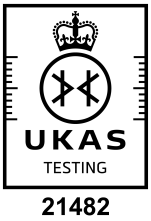ISO 9001 : 2015
Quality Management System Certification
We provide Quality Management System Certification to ISO 9001 for manufacturers, tool hire companies, training organisations and distributors. |
Our T&RGETMARK Certified companies demonstrate their management system meets or exceeds the requirements of the International Standard, ISO 9001. |
What is ISO 9001?
ISO 9001 is a standard published by the International Standards Organisation (ISO). It sets out the criteria for a Quality Management System.
It can be used by any organisation, large or small, regardless of its field of activity.
The standard is based on several “principles”.
Customer focus
Motivation
Process approach
Continual improvement
Using ISO 9001 helps to ensure that customers get consistent, good quality products and services, which in turn brings many business benefits. These include:
- Better internal management
- Reduction of waste
- Increased efficiency, productivity and profit
- Improved customer retention and acquisition
ISO 9001 - a global business standard
ISO 9001 is becoming a widespread business “must-have”. For example, many organisations that already operate an ISO 9001 system would require new suppliers to complete vendor assessments. This helps them to understand how well the supplier manages their business.
For some supply chains and service providers, understanding their suppliers’ management system can be critical to end-user satisfaction.
Frequently, being an ISO 9001 certified business speeds up this process, having already demonstrated effective business management to a 3rd party Certification Body.
ISO 9001 has also moved a long way from needing specific forms and procedures. Its focus now is on continuous business improvement through effective management of quality achievements.
Why would ISO 9001 benefit my business?
What are the potential motivations for a company to achieve ISO 9001?
- Win contracts – Certification will help when going through “pre-qualfying” for larger ‘framework’ contracts
- Improve business performance - Grow your business
- Client confidence - Potential purchasers have confidence in your management systems
- Common Assessment Standard – automatic “deemed to satisfy” for pre-qualification quality assessments (e.g. SSIP)
ISO 9001 is a framework. Each business can tailor the implementation to their market, business sector and customers.
- ISO 9001 covers different parts of your business -
Understand the context of the organisation
- Understanding where your organisation fits in the market – how can your business and its management system be structured to benefit your customers?
Support
- Put the right support structure in place to support your business, manage it better, and plan for the future.
Performance evaluation & Improvement
- Ongoing review of your management system, through performance monitoring, ensures your business continues to achieve quality goals and satisfy customers.
- Businesses need to evolve to changing market and customer needs. Effective change management is vital to success in business, and keeping your customers satisfied.
Leadership
- With a customer focus, it can set quality goals supported by top management leadership.
- Set out clear communications to your staff and beyond, on the quality goals to achieve customer satisfaction.
Operation
- Ensure that the day to day operation of your business works.
- Your business can deliver the products and services to your clients effectively and in line with customer needs.
Planning
- Stop being reactive and become more proactive.
- Understanding where your business fits in the market will ensure you manage risks appropriately and find new opportunities to explore.
Where do we start?

The first step is to contact us. We can then understand what you need and how we can help.

Some organisations need to understand where they are today. A Gap Analysis can be useful to recognise how ready you are for the Assessment.
First part of the Assessment looks at the current documented Management System against the requirements of ISO 9001

Second part of the Assessment looks at the effectiveness of the documented management system

With Stages 1 and 2 of the Assessment successfully completed, Certification can be granted – congratulations!

To maintain a valid Certificate, you will need to have regular risk-based surveillance of your Management System.

At the end of the certification cycle, a recertification assessment will take place, and if successful, a new Certificate granted.
Here are the main steps in the process - and the Test & Research Centre can help at every step:
The first step is to talk to us.
We are approachable and happy to talk through where you are today and what you want to achieve.
Drop us an email or use the Contact form at the bottom of the page. One of our team will contact you.
Your business will have processes that make it work. Some will be written down. Some will be just how you do things.
So the first thing to understand is where your business is compared ISO 9001.
The Test & Research Centre can help with a gap analysis. This is a very broad overview of the standard and how your business fits.
This is normally conducted on-site by one of our experienced assessors. Usually taking a day, the assessor will get to know more about your business and the journey it’s on.
As an independent third-party conformity assessment body, we are not allowed to “consult”, e.g. we can’t give you the answers to make your system compliant.
But the gap analysis will ease you into the requirements of the standard, so you can start to think about how things can be implemented.
Some businesses use external consultants to help develop and implement systems.
The gap analysis is optional – depending on your experience and implementation, you may be ready to start the process with the Stage 1 Assessment.
This is the first part of the assessment.
We will review your management system either remotely or on-site. This will be in more detail than the gap analysis and normally takes a day.
The assessment will include:
- Review of the documented management system (e.g. your written policies and procedures)
- Discuss any site specific or multi-site conditions.
- Talk to key personnel about how ready you are for Stage 2.
- Get to know your understanding of the requirements of ISO 9001. In particular, identification of key performance or significant process, objectives and operation of the management system.
- Obtain information about the scope of the management system, including:
- Site(s) within the scope of the management system
- Processes and equipment used
- Levels of controls established (particularly in multisite operations)
- Any applicable statutory and regulatory requirements
- Recognise if internal audits and management reviews are planned and performed
- Review the allocation of resources and details of Stage 2
- Provide us with sufficient understanding of the management system and site operations for planning Stage 2
- That the level of implementation of the management system is adequate for a Stage 2 assessment.
After the assessment, you will be provided with a documented conclusion of the Stage 1 assessment. This will include any areas for concern that could be classed as a nonconformity in Stage 2.
Following Stage 1, we will agree the date for the Stage 2 assessment.
This is where the full assessment takes place.
The purpose of Stage 2 is to evaluate the implementation, including the effectiveness, of your management system. This will take place on-site and include at least:
- Evidence gathering about conformity to all requirements of ISO 9001 (e.g. “show me” how your systems work against the procedures).
- Performance monitoring, measuring, reporting and reviewing against key performance objectives and targets
- Operational control of processes
- Internal auditing and management review
Following the assessment, the auditor (or audit team) will review the findings from stages 1 and 2. They will then agree on the audit conclusions.
The conclusions will include:
- Where conformity with requirements has been found
- Where any nonconformities have been found
- Where any opportunities for improvement may exist.
These conclusions will be reviewed and discussed at the closing meeting, so everyone understands the findings and what to do next.
At the closing meeting, a closeout date will be agreed. This is the date where any nonconformities must be resolved. If nonconformities are found, you will need to show us corrective actions and cause analysis of why they occurred, and how they will be eliminated within the agreed time. All our findings will be contained in a detailed report.
Finally, any submitted corrective actions and cause analysis will be reviewed by the Test & Research Centre to determine if they are acceptable. The effectiveness of these corrective actions has to be determined, so we may need to visit the site again, or just need documented evidence of the implementation.
Once the assessment report is complete, and any nonconformities are resolved, a Certification Decision can be made by the Test & Research Centre.
This is a review of all the evidence we have collected. It ensures that the requirements in ISO 9001 have been met.
It’s a review of the reports, by someone not involved in the project. It ensures that we have completed the work within our procedures and we are correctly Certifying a business based on the evidence obtained.
With this successfully completed, Certification can be granted – congratulations!
You will receive your unique T&RGETMARK Certificate in digital format, containing details of your business and the scope of the management system certified.
Our certificates last for 3 years from the date of grant and are issued on the basis that regular risk-based surveillance is maintained.
This is a critical part of the Certification process.
Over the life of the certificate, we will conduct assessments of the site(s) within the scope of certification.
This gives us evidence of ongoing compliance with ISO 9001.
The number of surveillance assessments is dependent on a lot of factors. Like the number of sites, the number of employees, management system scope, etc. But typically, we would look to undertake a surveillance assessment at most every 12 months.
Surveillance assessments do not necessarily review the whole management system. They will be planned to review all parts over the life of the certificate. This means we can maintain confidence that your certified management system continues to fulfil requirements between recertification audits.
The recertification assessment comes towards the end of the life of the Certificate.
This assessment confirms that your management system continues to meet the requirements of ISO 9001 and that it is effective.
We normally aim for this to be completed in due time before the Certificate expires. It allows time for any nonconformities to be resolved before the Certificate expires.
Following the assessment, if any major nonconformity is found, we will define time limits for correction and corrective actions. These actions must be implemented and verified prior to the expiration of certification.
With all that successfully completed, the cycle starts over again with a new surveillance plan.
What do I do next?
Do you think ISO 9001 would benefit your business? Would it help it to grow and expand in the right way?
Do you operate in any of the business sectors below?
- Consumer product distributor
- Industry body / Trade Association
- Manufacturer
- Plant & tool hire
- Training provider
If the answer is yes then we may be able to help. Our focus and competence are in the business sectors listed above. Unlike some of the bigger auditing providers, we don’t try to cover everything – we provide a high-quality and friendly service that adds value to the businesses we know most about.
The Test & Research Centre is a friendly and approachable Certification Body. Our aim is to build long term relationships with our happy customers.
Contact us today and one of our team will call you back to discuss how we can help.




